On November 18, 1978, Jim Jones instructed over 900 members of the Peoples Temple to take their own lives by drinking poison — and forcing anyone who resisted at gunpoint.
Today, the Jonestown Massacre that resulted in the death of more than 900 people in Guyana in November of 1978 is remembered in the popular imagination as the time that gullible expatriates from the Peoples Temple cult literally “drank the Kool-Aid” and died simultaneously from cyanide poisoning.
It’s a tale so bizarre that for many the strangeness of it almost eclipses the tragedy. It baffles the imagination: nearly 1,000 people were so enthralled by a cult leader’s conspiracy theories that they moved to Guyana, isolated themselves on a compound, then synchronized their watches and pounded back a poisoned drink.
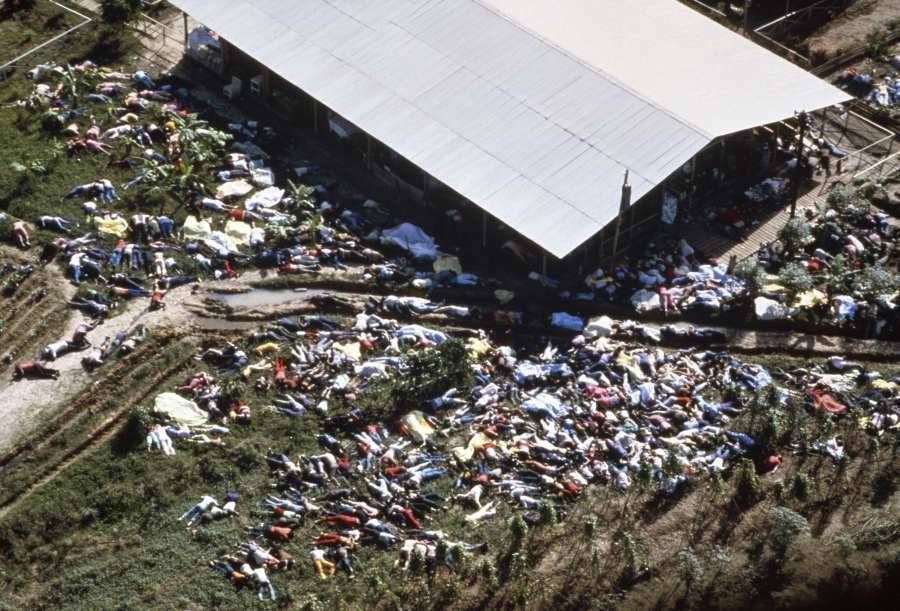
David Hume Kennerly/Getty ImagesDead bodies surround the compound of the Peoples Temple cult after the Jamestown Massacre, when more than 900 members, led by Reverend Jim Jones, died from drinking cyanide-laced Flavor Aid on November 19, 1978.
How could so many people have lost their grip on reality? And why were they so easily duped?
The true story answers those questions — but in stripping away the mystery, it also brings the sadness of the Jonestown Massacre to center stage.
The people in Jim Jones’s compound isolated themselves in Guyana because they wanted in the 1970s what many people of the 21st century take for granted a country should have: an integrated society that rejects racism, promotes tolerance, and effectively distributes resources.
They believed Jim Jones because he had power, influence, and connections to mainstream leaders who publicly supported him for years.
And they drank a cyanide-laced grape soft drink on November 19, 1978, because they thought they had just lost their entire way of life. It helped, of course, that it wasn’t the first time they thought they were taking poison for their cause. But it was the last.
The Rise Of Jim Jones
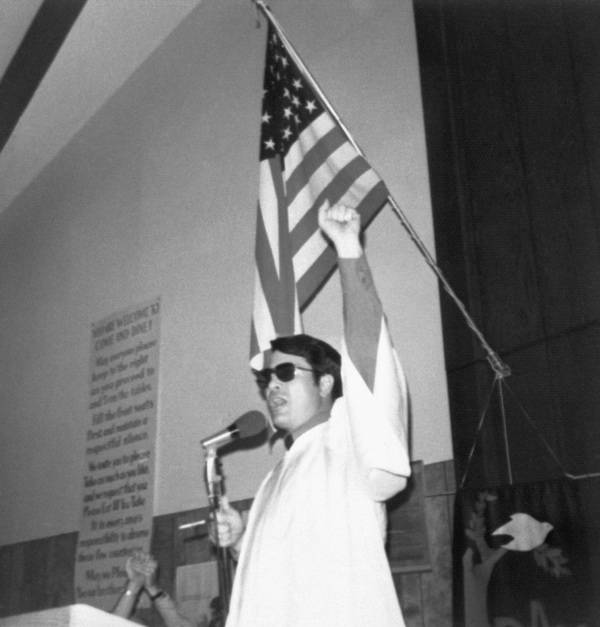
Bettmann Archives / Getty ImagesReverend Jim Jones raises his fist in a salute while preaching at an unknown location.
Thirty years before he stood in front of a vat of poisoned punch and urged his followers to end it all, Jim Jones was a well-liked, respected figure in the progressive community.
In the late 1940s and early 1950s, he was known for his charity work and for founding one of the first mixed-race churches in the Midwest. His work helped desegregate Indiana and earned him a devoted following among civil rights activists.
From Indianapolis, he moved to California, where he and his church continued to promote a message of compassion. They emphasized helping the poor and raising the downtrodden, those who were marginalized and excluded from society’s prosperity.
Behind closed doors, they embraced socialism and hoped that in time the country would be ready to accept the much-stigmatized theory.
And then Jim Jones began to explore faith healing. To draw larger crowds and bring in more money for his cause, he started promising miracles, saying he could literally pull cancer out of people.
But it wasn’t cancer that he magically whisked from people’s bodies: it was bits of rotten chicken that he produced with a magician’s flare.
It was a deception for a good cause, he and his team rationalized — but it was the first step down a long, dark road that ended with death and 900 people who would never see the sunrise on November 20, 1978.
The Peoples Temple Becomes A Cult
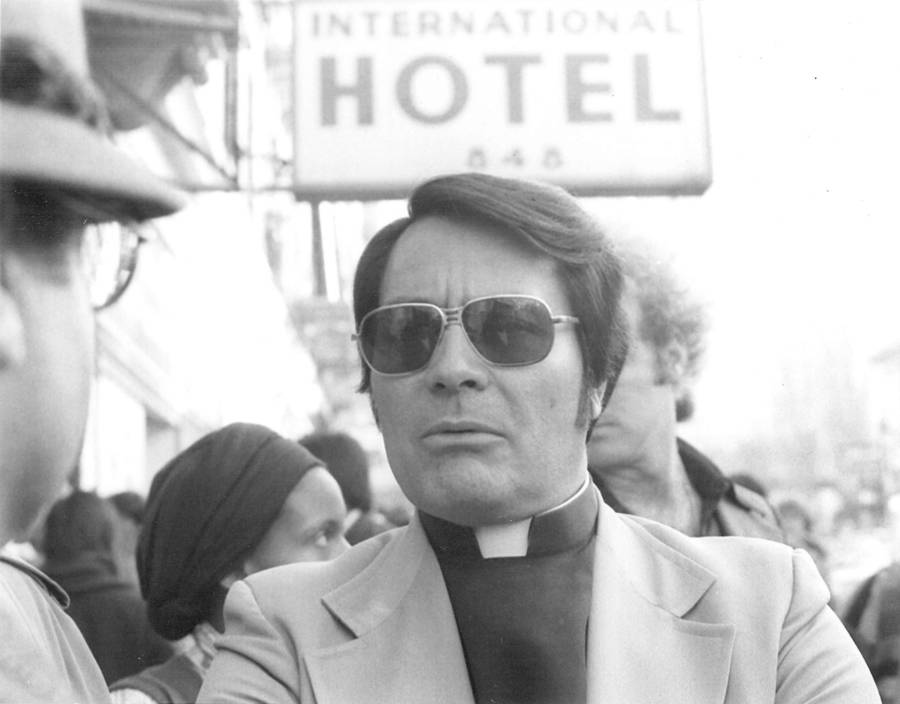
Nancy Wong / Wikimedia CommonsJim Jones at an anti-eviction rally on Sunday, January 16, 1977, in San Francisco.
It wasn’t long before things began to get stranger. Jones was becoming increasingly paranoid about the world around him. His speeches began to reference a coming doomsday, the result of a nuclear apocalypse brought about by government mismanagement.
Though he continued to enjoy popular support and strong relationships with the day’s leading politicians, including First Lady Rosalynn Carter and California governor Jerry Brown, the media was beginning to turn on him.
Several high-profile members of the Peoples Temple defected, and the conflict was both vicious and public as the “traitors” lambasted the church and the church smeared them in return.
The church’s organizational structure ossified. A group of primarily well-off white women oversaw the running of the temple, while the majority of the congregants were black.
The meetings of the upper-echelons grew more secretive as they planned increasingly complicated fundraising schemes: a combination of staged healings, trinket marketing, and solicitous mailings.
At the same time, it was becoming clear to everyone that Jones wasn’t particularly invested in the religious aspects of his church; Christianity was the bait, not the goal. He was interested in the social progress he could achieve with a fanatically devoted following at his back.
https://www.youtube.com/watch?v=kUE5OBwDpfs
His social goals became more openly radical, and he began to attract the interest of Marxist leaders as well as violent leftist groups. The shift and a slew of defections — defections in which Jones sent search parties and a private plane to reclaim the deserters — brought the media down on what was now being widely regarded as a cult.
As stories of scandal and abuse proliferated in the papers, Jones made a run for it, taking his church with him.
Setting The Stage For The Jonestown Massacre

The Jonestown Institute / Wikimedia CommonsThe entrance to the Jonestown settlement in Guyana.
They settled in Guyana, a country that appealed to Jones because of its non-extradition status and its socialist government.
Guyana’s authorities warily allowed the cult to begin construction on their utopic compound, and in 1977, the Peoples Temple arrived to take up residence.
It didn’t go as planned. Now isolated, Jones was free to implement his vision of a pure Marxist society — and it was a lot grimmer than many had anticipated.
The daylight hours were consumed by 10-hour workdays, and the evenings were filled with lectures as Jones spoke at length on his fears for society and excoriated defectors.
On movie nights, entertaining films were replaced with Soviet-style documentaries about the dangers, excesses, and vices of the outside world.
Rations were limited, as the compound had been built on poor soil; everything had to be imported via negotiations on shortwave radios — the only way the Peoples Temple could communicate with the outside world.
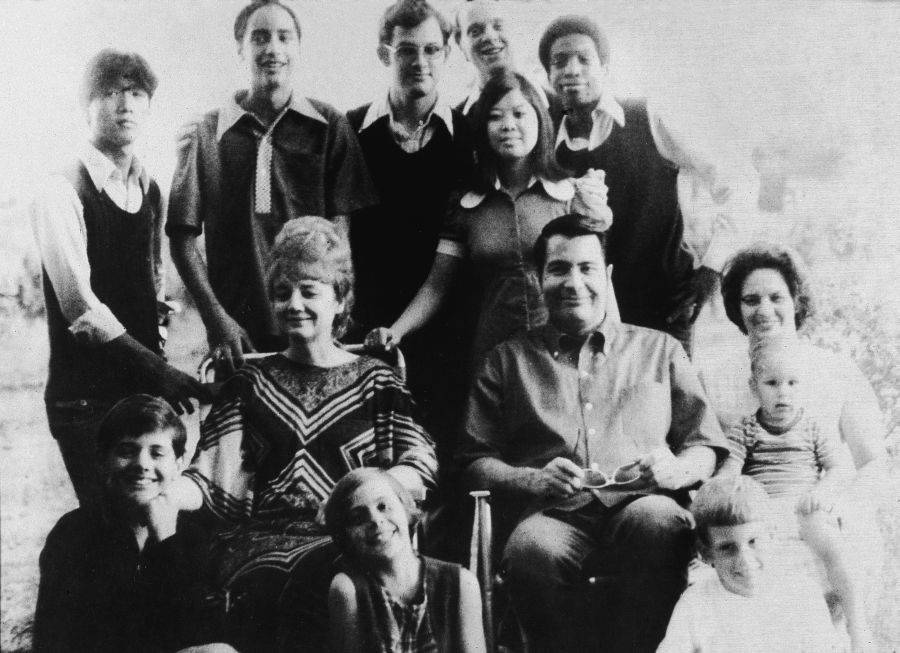
Don Hogan Charles/New York Times Co./Getty ImagesPortrait of Jim Jones, the founder of the Peoples Temple, and his wife, Marceline Jones, seated in front of their adopted children and next to his sister-in-law (right) with her three children. 1976.
And then there were the punishments. Rumors escaped into Guyana that cult members were harshly disciplined, beaten and locked in coffin-sized prisons or left to spend the night in dry wells.
Jones himself was said to be losing his grip on reality. His health was deteriorating, and by way of treatment, he began taking a nearly lethal combination of amphetamines and pentobarbital.
His speeches, piped over the compound speakers at nearly all hours of the day, were becoming dark and incoherent as he reported that America had fallen into chaos.
As one survivor recalled:
“He would tell us that in the United States, African Americans were being herded into concentration camps, that there was genocide on the streets. They were coming to kill and torture us because we’d chosen what he called the socialist track. He said they were on their way.”
Jones had begun to raise the idea of “revolutionary suicide,” a last resort that he and his congregation would pursue if the enemy showed up at their gates.
He even had his followers rehearse their own deaths, calling them together in the central courtyard and asking them to drink from a large vat he had prepared for just such an occasion.
It’s not clear whether his congregation knew those moments were drills; survivors would later report having believed they would die. When they didn’t, they were told that it had been a test. That they had drunk anyway proved them worthy.
It was in that context that U.S. Congressman Leo Ryan came to investigate.
The Congressional Investigation That Leads To Disaster

Wikimedia CommonsRepresentative Leo Ryan of California.
What happened next wasn’t Representative Leo Ryan’s fault. Jonestown was a settlement on the brink of disaster, and in his paranoid state, Jones was likely to have found a catalyst before long.
But when Leo Ryan showed up at Jonestown, it threw everything into chaos.
Ryan had been friends with a Peoples Temple member whose mutilated body had been found two years prior, and since then he — and several other U.S. representatives — had taken a keen interest in the cult.
When reports coming out of Jonestown suggested that it was far from the racism- and poverty-free utopia that Jones had sold his members on, Ryan decided to check on the conditions for himself.
Five days before the Jonestown Massacre, Ryan flew to Guyana along with a delegation of 18 people, including several members of the press, and met with Jones and his followers.
The settlement wasn’t the disaster Ryan expected. While conditions were lean, Ryan felt the vast majority of cultists seemed to genuinely want to be there. Even when several members asked to leave with his delegation, Ryan reasoned that a dozen defectors out of 600 or so adults wasn’t cause for concern.
Jim Jones, however, was devastated. Despite Ryan’s assurances that his report would be favorable, Jones was convinced that the Peoples Temple had failed the inspection and Ryan was going to call in the authorities.
Paranoid and in failing health, Jones sent his security team after Ryan and his crew, who had just arrived at the nearby Port Kaituma airstrip. The Peoples Temple force shot and killed four delegation members and one defector, wounding several others.
Leo Ryan died after being shot more than 20 times.
The Jonestown Massacre And The Poisoned Flavor Aid
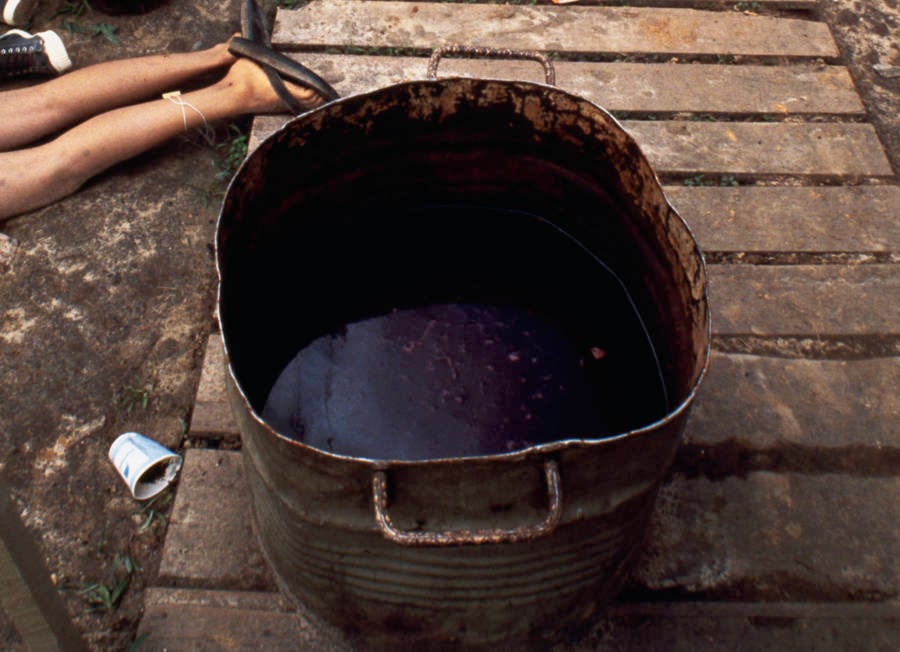
Bettmann / Getty ImagesThe vat of cyanide-laced Flavor Aid that killed over 900 at the Jonestown Massacre.
With the congressman dead, Jim Jones and the Peoples Temple were finished.
But it wasn’t arrest that Jones anticipated; he told his congregation that the authorities would be “parachuting in” at any moment, then sketched a vague picture of a terrible fate at the hands of a deranged, corrupt government. He encouraged his congregation to die now rather than face their torture:
“Die with a degree of dignity. Lay down your life with dignity; don’t lay down with tears and agony … I tell you, I don’t care how many screams you hear, I don’t care how many anguished cries… death is a million times preferable to 10 more days of this life. If you knew what was ahead of you — if you knew what was ahead of you, you’d be glad to be stepping over tonight.”
The audio of Jones’s speech and the ensuing suicide survives. On the tape, an exhausted Jones says he sees no way forward; he’s tired of living and wants to choose his own death.
One woman courageously disagrees. She says she’s not afraid to die, but she thinks the children at least deserve to live; the Peoples Temple shouldn’t give up and let their enemies win.

Frank Johnston/The Washington Post/Getty ImagesIn the aftermath of the Jonestown Massacre, families were found together, holding each other.
Jim Jones tells her the children deserve peace, and the crowd shouts the woman down, telling her she’s just afraid to die.
Then the group who killed the congressman return, announcing their victory, and the debate ends as Jones begs someone to hurry the “medication.”
Those administering the drugs — perhaps, the detritus on the compound suggests, with syringes squirted into the mouth — can be heard on tape assuring the children that the people who have ingested the drug aren’t crying from pain; it’s only that the drugs are “a little bitter tasting.”
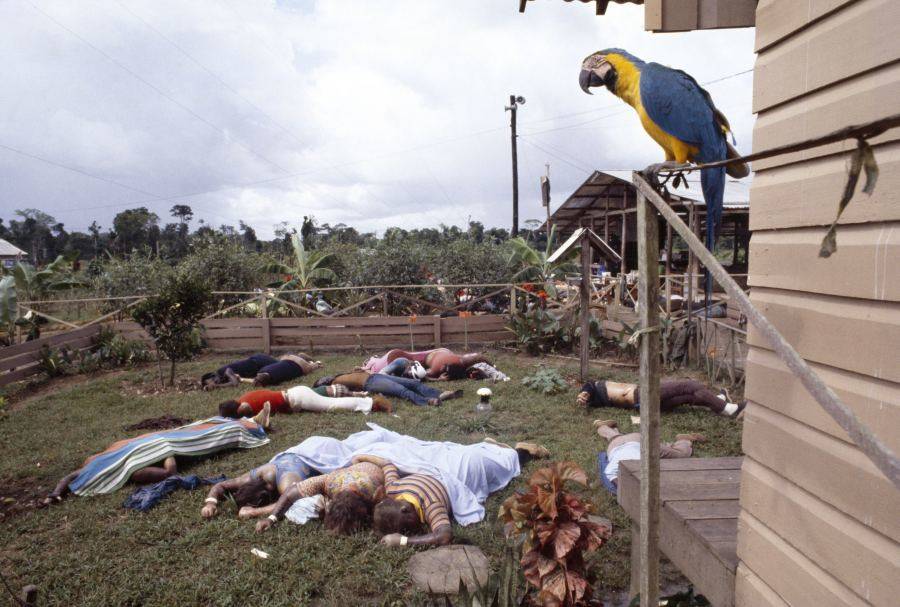
David Hume Kennerly/Getty Images
Others express their sense of obligation to Jones; they wouldn’t have made it this far without him, and they’re now taking their lives out of duty.
Some — clearly those who have not yet ingested the poison — wonder why the dying look like they’re in pain when they should be happy. One man is grateful that his child won’t be killed by the enemy or raised by the enemy to be a “dummy.”
https://www.youtube.com/watch?v=A5KllZIh2Vo
Jones just keeps begging them to hurry up. He tells the adults to stop being hysterical and “exciting” the screaming children.
And then the audio ends.
The Aftermath Of The Jonestown Massacre

David Hume Kennerly/Getty Images
When the Guyana authorities showed up the following day, they expected resistance — guards and guns and an irate Jim Jones waiting at the gates. But they arrived on an eerily quiet scene:
“All of a sudden they start to stumble and they think that maybe these revolutionaries placed logs on the ground to trip them up, and now they’re going to start shooting from ambush — and then a couple of the soldiers look down and they can see through the fog and they start screaming, because there are bodies everywhere, almost more than they can count, and they’re so horrified.”
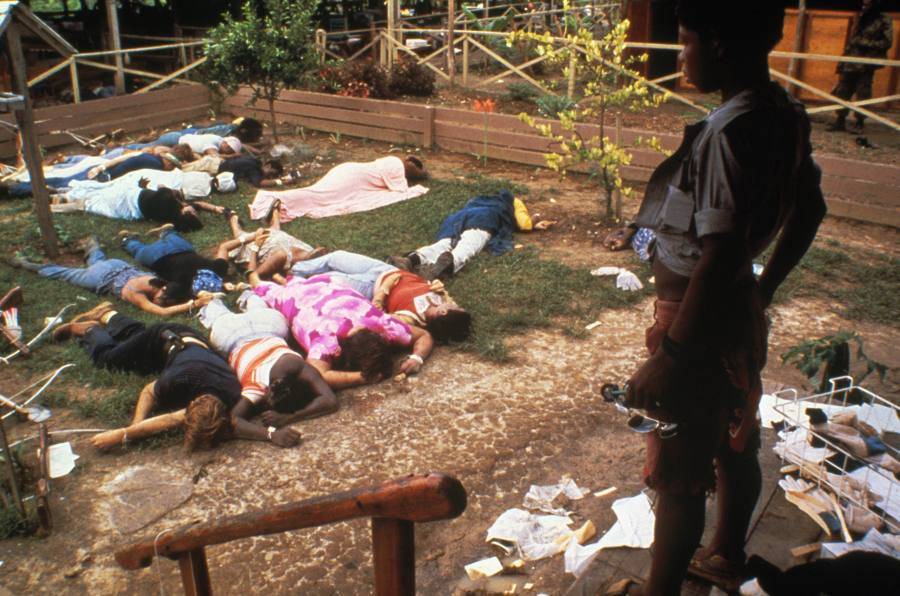
Bettmann Archive/Getty Images
But when they found Jim Jones’s body, it was clear that he hadn’t taken the poison. After watching his followers’ agony, he chose instead to shoot himself in the head.
The dead were a grim collection. Around 300 were children who had been fed the cyanide-laced Flavor Aid by their parents and loved ones. Another 300 were elderly, men and women who depended on younger cultists for support.
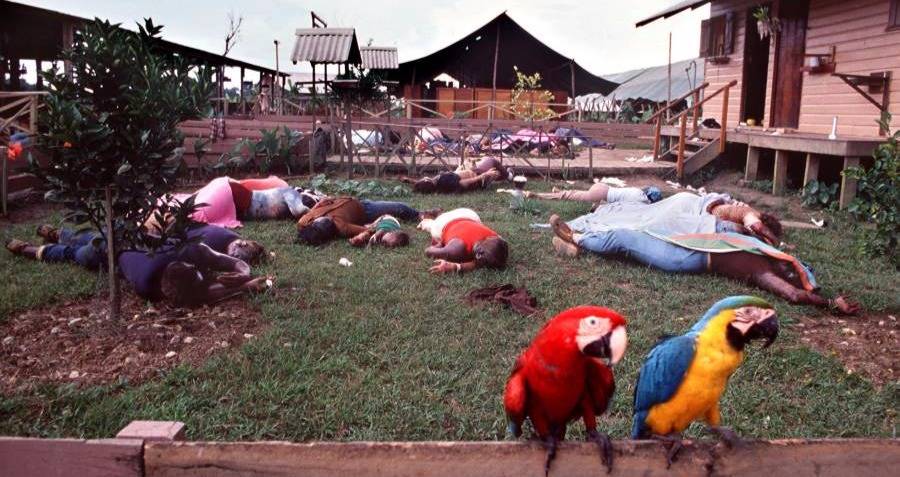
As for the rest of the people killed in the Jonestown Massacre, they were a mix of true believers and the hopeless, as John R. Hall writes in Gone from the Promised Land:
“The presence of armed guards shows at least implicit coercion, though the guards themselves reported their intentions to visitors in glorious terms and then took the poison. Nor was the situation structured as one of individual choice. Jim Jones proposed a collective action, and in the discussion that followed only one woman offered extended opposition. No one rushed up to tip over the vat of Flavor Aid. Wittingly, unknowingly, or reluctantly, they took the poison.”

This lingering question of coercion is why the tragedy is today referred to as the Jonestown Massacre — not the Jonestown Suicide.
Some have speculated that many of those who took poison might even have thought the event was another drill, a simulation that they would all walk away from just as they had in the past. But on November 19, 1978, nobody got up again.
After this look at the Jonestown Massacre, read up on some of the most extreme cults that are still active today in America. Then, step inside the hippie communes of 1970s America.





